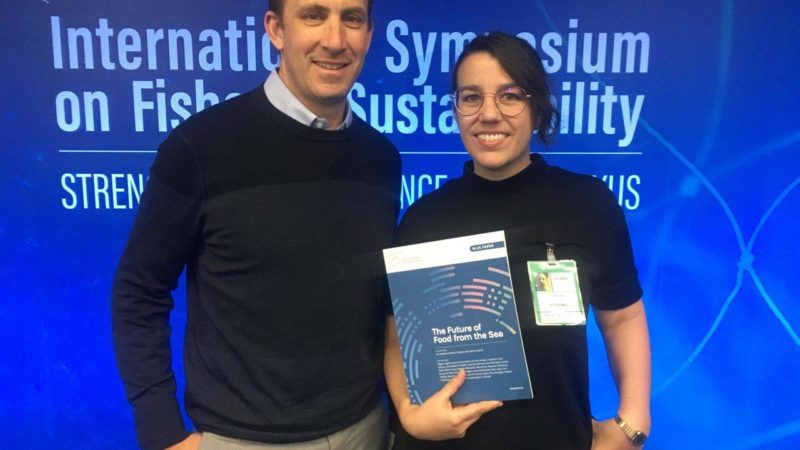Answering the question of how much food the sea could produce in a sustainable way in 2050 is the objective of the study published in the prestigious journal Nature, by a group of 22 researchers from ten countries, including finds the head of the Future Oceans Lab group, of the CIM-UVigo, Elena Ojea. Based on the analysis of multiple biological, ecological and economic factors, experts point out that in 2050 the production of food from the sea, including fishing, aquaculture and shellfish, could increase between 36% and 74% the 59 million tons of food it currently generates.
Coordinated by Christopher Costello, from the University of California, Ling Cao, from Shanghai Jiao Tong University, and Stefan Gelcich, from Ponficia Universidad Católica de Chile, the article The future of food from the sea is based on Blue Paper commissioned by a multidisciplinary team of international experts by the High Level Panel for a Sustainable Ocean Economy,promoted by the United Nations. Presented in November 2019 at the World Food Organization (FAO) in Rome, the report was produced by a team of researchers from the fields of economics, biology, ecology, nutrition, fisheries and aquaculture, among which was Ojea as the only Spanish representative.
From this Blue Paper, the CIM researcher explains, “we refined the methods and analysis” to give rise to this publication in Nature, “which guarantees the global impact of the study”, necessary, she points out, to give greater visibility to “a debate on how to feed a growing world population in the future with limited resources ”. In this sense, the study highlights the “important role” that the oceans can play in responding, in a sustainable way, to this increase in food demand through a “substantial increase” in production for which, they point out, “requires an improvement in fisheries management, changes in regulations and technological innovations.”
Different growth scenarios
Taking into account multiple factors, “from biological and ecological limitations linked to marine fish populations, their distribution and growth, as well as the availability of areas and resources to expand sustainable aquaculture”, such as the balance between supply and demand, the study presents a series of “growth ranges that take into account different scenarios,” Ojea explains.
Taking into account these ecological, economic and technological limitations, a series of “sustainable supply curves” are presented that place between 36% and 74% the potential for increased production with respect to the 59 million tons currently generated by these three productive sectors. This growth potential, Ojea explains, “depends on three factors”; of a “reform in the management of fisheries and aquaculture facing more sustainable forms in the long term”, that global demand adjusts to this production and that, “the most complicated, that current limitations such as feed ratios in the aquaculture improve thanks to technological advances. ”In this sense, Ojea clarifies that if 36% growth would already be possible with current technologies” improving management “, the largest of the expected increases” depends largely on technological improvements that are yet to be made “.
Growth in the three sectors
According to the article, the food generated in the sea, which comes in 80% from fishing, currently represents 17% of the world’s edible meat production, a percentage that could reach 25% in 2050 through a substantial increase in production. The study concludes in fact that production could increase both in fishing and shellfish farming as well as in marine aquaculture, the latter being the one that would experience the greatest growth for which they will be precise, the article adds, “management practices and policies that allow an environmentally sustainable expansion ”.
Feeding the world in a sustainable way
Responding to the increased needs for edible meat through a “land expansion”, the study says, could aggravate the problems derived from climate change, while causing the loss of biodiversity. Faced with this situation, food from the sea could contribute “in an exceptional way to global food and nutritional security”, given that it is also a source of protein and essential fatty acids “that are not donated to be found in other foods”.
“We show how this objective of food for all can be achieved through the sustainable management of the sea, including marine fishing and aquaculture”, Ojea highlights, who focus on Galicia as “one of the places that may have the greatest potential for improve its fisheries and aquaculture production in a sustainable way ”. In this way, she concludes, “we put the marine sector in the middle of answering the great question of how to feed the planet in the future”.
Source: DUVI

